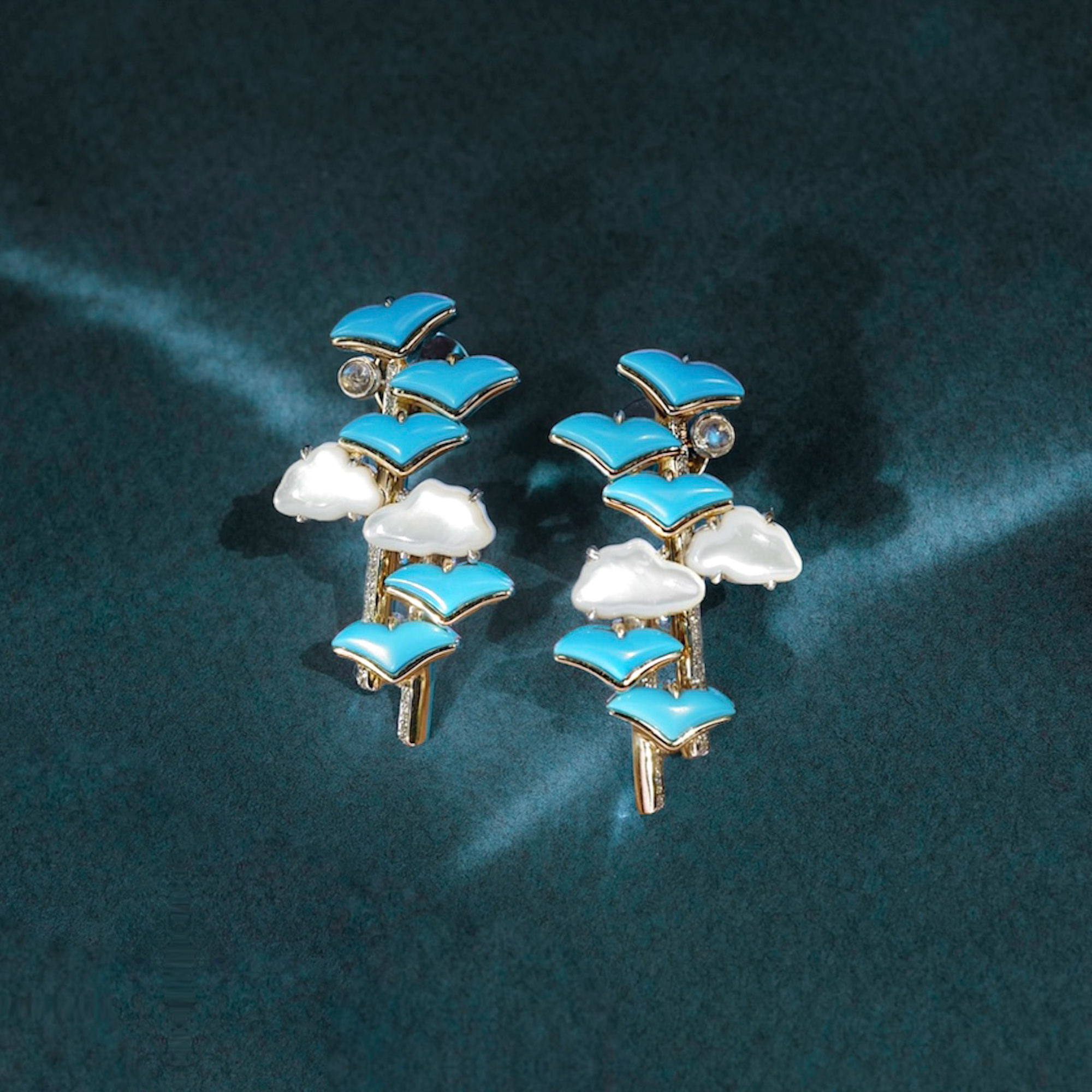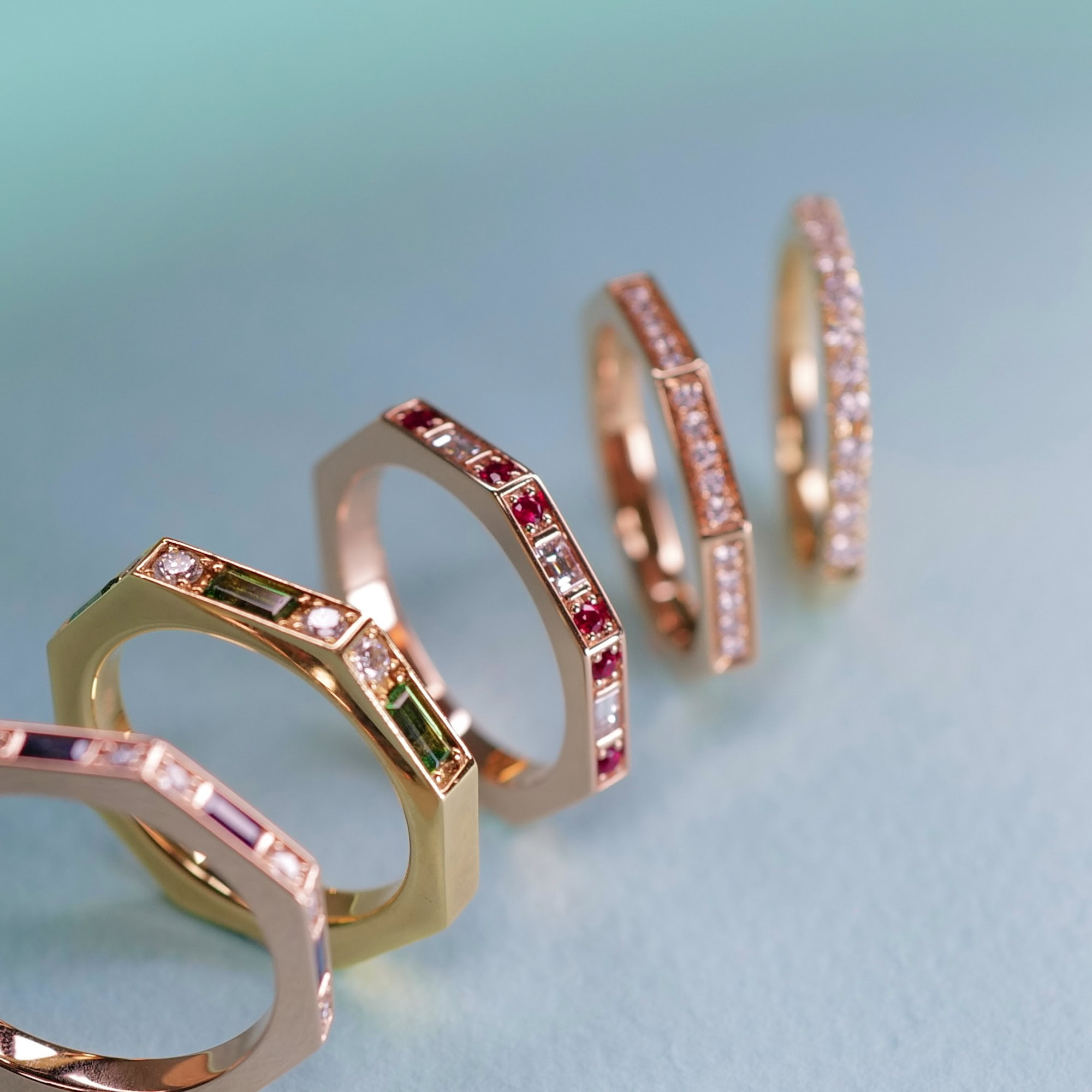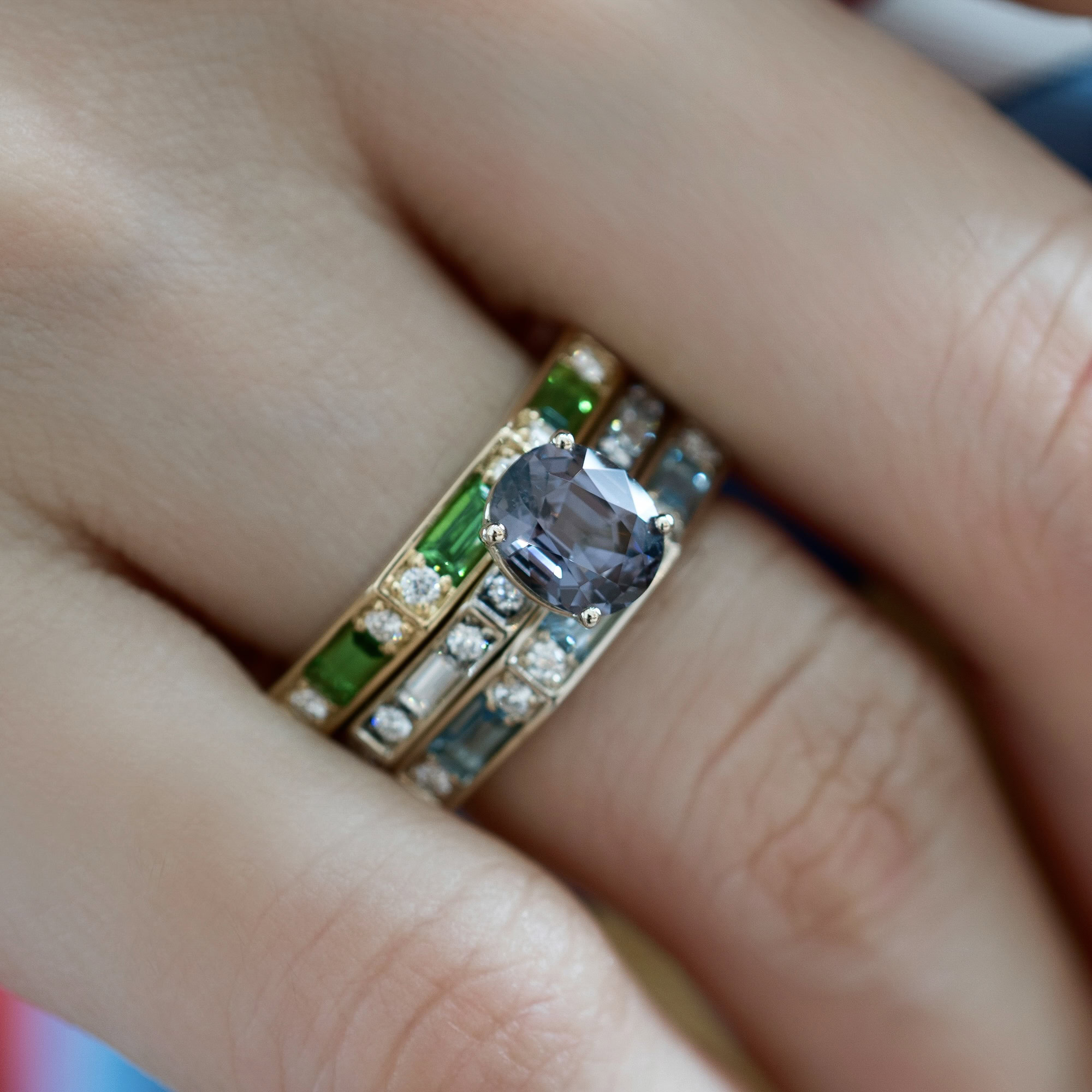As Special as it gets – 10 interesting facts about Opals
Every gemstone is unique, but when it comes to Opals, this is remarkably accentuated. True miracles of nature, they’re the product of seasonal rains that drenched dry grounds in regions of Australia, Mexico and Ethiopia among others. The showers of rain soaked deep into ancient underground rock, carrying dissolved silica (a compound of silicon and oxygen) downward. These solid deposits eventually formed these magnificent gems.

As lightwaves travel between the microscopic spheres that constitute their bodies, the waves bend, breaking up into spectral colours. This results in the special rainbow-like spectacle called “Play of Colours”.
Have we got you gripped yet? Keep on reading to discover our index of fascinating Opals trivia.
(1) Mysterious in every way
There’s a captivating mystique tied to these gems, starting with their nomenclature. The word “opal” evolved from the Roman “opalus” that signifies “seeing a change of colour”. The Greek version, “opallios”, is a variation of another word from ancient Sanskrit “upala”, which meant “precious stone”. As this etymological succession implies, they come hand-in-hand with a millennia of rich history to support their status as a highly treasured gemstone. Adored by the Romans as a token of hope and purity, and regarded as a sacred and heaven sent present by the Arabs. While the early Greeks believed they granted the ability of foresight. There’s clearly a lot of superstition and a fair share of mystery that makes them even more alluring!
(2) Up to 10% of an Opal is water!
Structurally similar to quartz, they are an amorphous form of silica that usually have 6% to 10% water content, being sedimentary stones.

(3) Opals can be transparent
Some varieties, specifically the rare African Wollo opals become transparent when underwater. This shows a remarkable hydrophane character, adding yet another layer of otherworldly interest to their already impressive curriculum.

(4) Opals have further classifications
The current terminologies conferred to Opals is relatively complex and revolves around their lapidary applications. The three most commonly used terms are “common”, “precious” and “fire”. The Common ones are plainly named due to the fact that they lack a play of spectral colours. They are usually opaque to translucent and brownish orange in colour, however it is possible to find them in any colour, some of which are quite attractive!
Precious opals on the other hand display play-of-colour. Flashes of different shades are a result of diffraction of light through minuscule apertures on silica spheres within their structure. They may be further classified by colour modifiers: white, black, pink, and blue, which describe the main element of their colouring. The one attribute to truly set these gems apart is their wonderful ability of reflection. Fire opals are unique in that they specifically exude warm colours, ranging from oranges and yellows to mesmerising gold.
(5) Famous Black Opals
Australia is currently the leading source of Opals. But there is one particular variety that doesn’t cease to create a buzz: the famous Black Opals. Despite the name they are not entirely black, which wouldn’t have much value, but these extremely rare gems are characterised by a dark body tone which can range from dark grey to jet black, allowing a stark contrast for rainbow colour displays to stand out magnificently! This vibrancy of colour is precisely what makes black opals the most valuable of all.
(6) Millions of years in formation
As the case with most extraordinary occurrences, they take excruciatingly long periods of time to form. Though the exact cause of opal formation is still disputed, it’s generally accepted that silica was carried down into rock crevices by heavy rains. The gel-like substance remaining after water evaporation hardened over millions of years! So by a rough estimation, one centimetre of Opal may have taken around 5 million years to solidify.

(7) October Birthstone!
The perfect gift for October-born loved ones! They officially became October’s birthstone in 1912 by the National Association of Jewellers. Oh, they are also the official gemstone suggested as a present for a 14th wedding anniversary! (Yes, this is a thing)

(8) How to properly keep Opals
They are particular creatures, and should be treated as such. If you need to store your opals for some time, we recommend to place them in a padded cloth bag for better protection. If we’re talking about long periods, however, it’s best to place them in cotton wool ever so slightly damped, then keep the whole thing sealed in a plastic bag. The water in the cotton is not at all meant to soak into the stone, but will prevent it from losing internal moisture if it’s exposed to very low humidity.

(9) Opals can be synthesised
As with most gemstones, opals can now be made in a laboratory. The latest finessing of technologies in this field have allowed for modern lab-created opals to appear much more similar to the genuine varieties. A lack of inclusions in a good indicator that the stone may be synthetic. However, we only source natural opals for that beauty in creation!

(10) The most expensive Opal
The ‘Virgin Rainbow’: meet the rarest and most expensive Opal in history – worth over 1 million US dollars. Discovered in South Australia, this remarkably atypical gem exhibits incredible fluorescence and it actually glows in the dark! The darker the light, the more colour comes out of it. A truly one of a kind spectacle!
Apart from all these fun facts, Opals are considered one of the most precious gemstones for their enticing kaleidoscope of colours that represent all hues of the spectrum and unmatchable beauty. They can be combined with a plentitude of other crystals to create the most fantastic, bespoke pieces!





